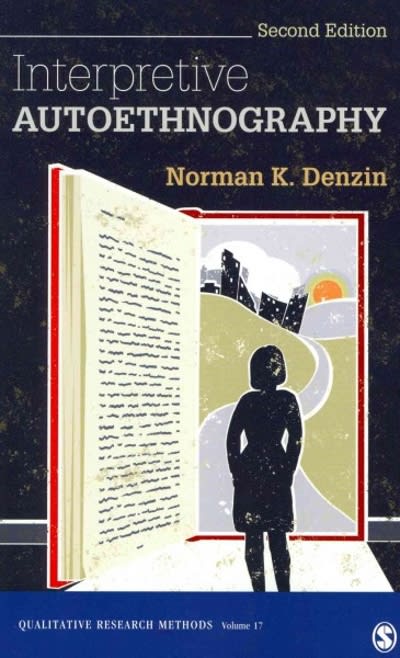Question
The hypothesis was that discussing racially sensitive material with a member of another race would require self-control and therefore deplete glucosemainly for people who do
The hypothesis was that discussing racially sensitive material with a member of another race would require self-control and therefore deplete glucosemainly for people who do not habitually stifle prejudicial thoughts and feelings (i.e., for people low in IMS). A regression analysis that regressed standardized IMS, condition (same-race vs. interracial interaction), and their interaction upon postinteraction glucose levels yielded the predicted significant interaction between IMS and experimental condition (b 4.41), t(1, 33) 2.20, p .05 (see Figure 1). The postinteraction glucose levels were controlled for baseline (preinteraction) glucose levels, which did not differ by condition or IMS (ts 1). To interpret the interaction, we assessed the simple effect of condition among participants who were relatively high versus low in IMS (one standard deviation above and below the mean on IMS, respectively; Aiken & West, 1991). Results indicated that the effect of condition was significant for low-IMS participants (b
3.28), t(1, 33) 2.33, p .05, but not for high-IMS participants (b 1.16), t(1, 33) 0.92, p .36. Thus, discussing a sensitive topic with a member of a different race used up a significant amount of glucose among people with low IMS. Glucose was not depleted in people who discussed the same topics with members of their own race or among people who are dispositionally motivated to stifle prejudicial thoughts and feelings. This pattern is consistent with the view that acts of selfcontrol deplete blood glucose. Effort. Interracial interactions require self-control because one often exerts effort to avoid expressing negative attitudes or opinions (Richeson & Trawalter, 2005). In support of this, in the interracial interaction condition, IMS scores predicted selfreported effort, r(21) .48, p .05; effort predicted postinteraction glucose levels (controlling for preinteraction glucose levels) r(18) .54, p .05; and a Sobel test for mediation pointed toward the conclusion that effort mediated the effect of IMS on postinteraction glucose levels, although it fell short of two-tailed significance (z 1.79, p .07). Glucose dropped primarily among low-IMS participants because they found the interracial interaction more effortful than did high-IMS participants. Effort did not appear to mediate the effect of IMS in the same-race condition (z .20, ns), and the preconditions for mediation were not met either. These findings suggest that the self-regulatory effort needed to avoid negative responses during an interracial interaction depletes an energy source on which self-control relies (i.e., glucose).
- Describe the main results presented. Do these results match what was predicted by the authors? Explain.
Step by Step Solution
There are 3 Steps involved in it
Step: 1

Get Instant Access to Expert-Tailored Solutions
See step-by-step solutions with expert insights and AI powered tools for academic success
Step: 2

Step: 3

Ace Your Homework with AI
Get the answers you need in no time with our AI-driven, step-by-step assistance
Get Started


